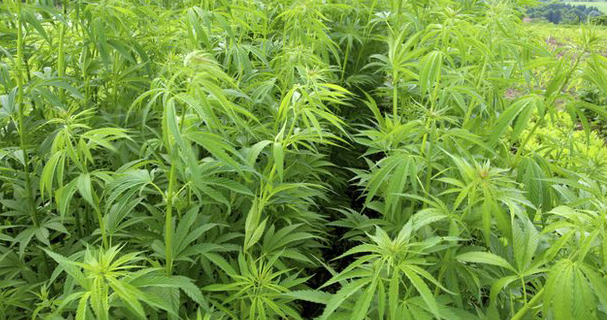Hemp Materials ‘Better Than Graphene’
They “cooked” cannabis bark into carbon nanosheets and built supercapacitors “on a componen with or much better than graphene” – the defacto standard. Planet and tools could harness this hemp technology, the united states scientists say. They presented their work on the American Chemical Society meeting in Bay Area. “People request me: why hemp? I only say, why don’t you?” stated Dr David Mitlin of Clarkson College, New You are able to, who describes his device within the journal ACS Nano. “We’re making graphene-like materials for any thousandth from the cost – so we’re doing the work with waste. “The hemp we me is perfectly legal to develop. It’s no THC inside it whatsoever – there’s no overlap with any leisure activities.”
Secret sauce
In nations including China, Canada and also the United kingdom, hemp could be grown industrially for clothing and building materials. However the leftover bast fibre – the interior bark – typically eventually ends up as landfill. Dr Mitlin’s team required these materials and recycled them into supercapacitors – energy storage products that are changing the way in which electronics are powered. They’re ideal in machines that depend on sharp bursts of energy. In planet, for instance, supercapacitors can be used for restorative healing stopping. Delivering this torrent requires electrodes rich in area – certainly one of graphene’s many phenomenal qualities.
More powerful than gemstone, more conductive than copper and much more flexible than rubber, the “miracle material” was the prospective of the £50m investment by United kingdom Chancellor George Osborne. But although this carbon monolayer may be the condition-of-the-art material for commercial supercapacitors, it’s prohibitively costly to create. Finding cheap, sustainable options may be the specialty of Dr Mitlin’s former research group in the College of Alberta.
They’ve played around with with all of flavours of biowaste – from peat moss moss to eggs. Most lately, they switched blueberry peel into batteries. “You can perform interesting things with bio-waste. We’ve virtually determined the key sauce from it,” stated Dr Mitlin. The secret would be to tailor the best plant fibre right electrical device – based on their organic structure.
“With blueberry peels, you are able to using them as a dense block of carbon – it is called pseudo-graphite – which’s ideal for sodium ion batteries,” he described. “But should you take a look at hemp fibre its structure may be the opposite – it can make sheets rich in area – which’s very favorable to supercapacitors.” The initial step, he described, “is to prepare it – similar to a pressure oven. It’s known as hydrothermal synthesis.
“Once you dissolve the lignin and also the semicellulose, it leaves these carbon nanosheets – a pseudo-graphene structure.” By fabricating these sheets into electrodes and adding an ionic liquid because the electrolyte, his team made supercapacitors which operate in a wide range of temps along with a high energy density. Direct evaluations with rival products are complicated by the range of measures for performance.
But Mitlin’s peer-examined journal paper ranks the unit “on componen with or much better than commercial graphene-based products”. “They work lower to 0C and display the best energy-energy combinations reported within the literature for just about any carbon. “For example, in a high energy density of 20 kW/kg (kilowatt per kilo) and temps of 20, 60, and 100C, the power densities are 19, 34, and 40 Wh/kg (watt-hrs per kilo) correspondingly.” Fully put together, their energy density is 12 Wh/kg, which may be accomplished in a charge time under six seconds.
Growth industry
“Obviously hemp can’t do everything graphene can,” Dr Mitlin concedes. “But for energy storage, it really works equally well. Also it costs a small fraction of the cost -$500-1,000 a tonne.” Getting established an evidence of principle, his start-up company Alta Supercaps is wishing to start small-scale manufacturing. It intends to market products towards the gas and oil industries – where high-temperature operation is really a valuable resource. His proceed to the united states coincides with a general change in regulating attitudes – with signs that hemp might be creating a comeback.
In China the crop is broadly cultivated, as well as in Canada, the for textiles keeps growing. “Fifty miles in the future from the house in Alberta there is an farming hemp processing facility. And all sorts of that bast fibre – it simply sits inside a high bay, plus they don’t understand what related to it,” Dr Mitlin told BBC News.
“It’s a waste product searching for something-added application. Individuals are almost having to pay you to definitely go away.” And when we’ve got the technology really will take off – it might help financial systems, he argues. “It’s a strong plant – you may also fill it up in Alberta, Manitoba. “A large amount of maqui berry farmers could be happy to grow hemp.”

News Moderator – The Overall @ 420 MAGAZINE ®
Source: Bbc.com
Author: James Morgan
Contact: E Mail Us
Website: BBC News – Hemp fibres ‘better than graphene’
Will New ‘Lab Rat’ Advertisements Stop Teens from Smoking Pot? – LiveScience.com State stamps out nascent efforts to smoke marijuana on chartered buses – seattlepi.com (blog)

Comments are currently closed.